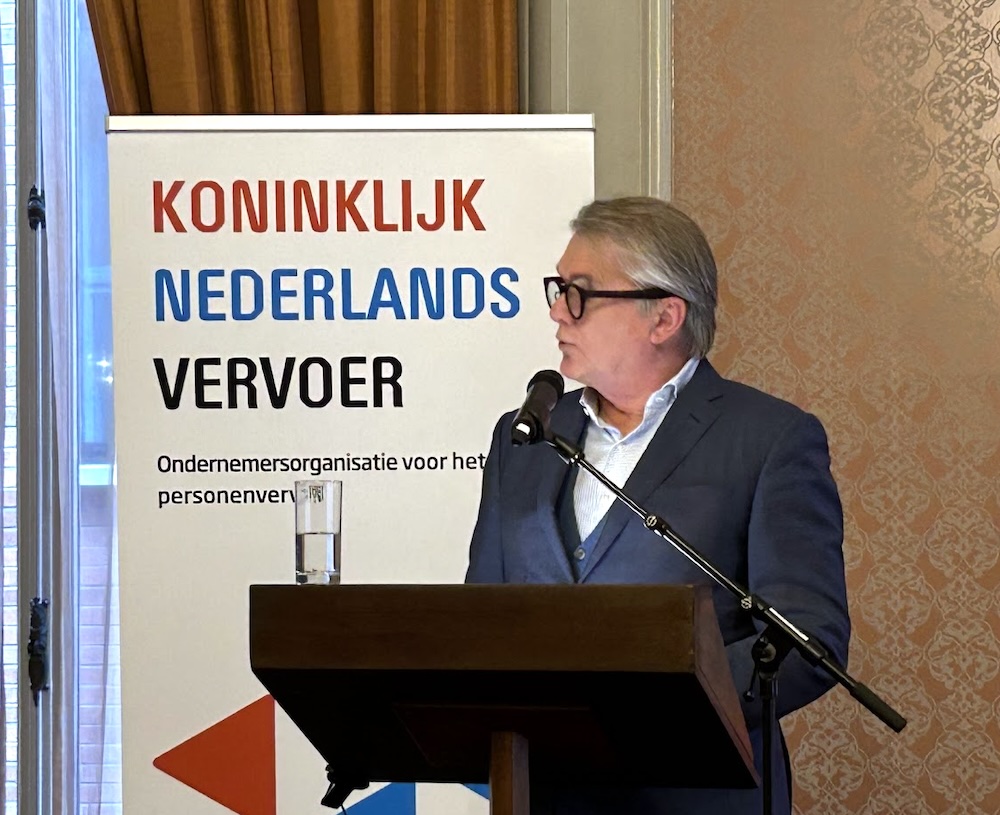The introduction of the Central Database Taxi (CDT) in the Netherlands creates an interesting dynamic among hardware suppliers within the taxi industry.
The introduction of the Central Taxi Database (CDT) in the Netherlands is not only a step forward in the digitalization of taxi services for the ILT, but also a source of concern for the trade association, carriers and IT service providers. The deadline of January 1, 2025 is fast approaching, and critical points were discussed during a recent digital meeting between the ICT service providers and the project group of the Human Environment and Transport Inspectorate (ILT).
The recent developments surrounding the implementation of the Central Taxi Database (CDT) and the associated 'Practical Test 2' raise critical questions about the policy choices of the Human Environment and Transport Inspectorate (ILT). Although the project is intended to take the taxi industry to a higher level of technological integration, a specific measure by the ILT seems counterproductive: the unchanged obligation to use Taxi On-Board Computers (BCT).
Although entrepreneurs can obtain an exemption for the use of the current BCT for this phase, the obligation to install such a device remains.
Current suppliers of BCTs enjoy a competitive advantage due to the mandatory nature of these devices. These companies, which already have a strong foothold in the taxi market, can benefit from existing regulations that require taxi operators to purchase and use these technologies. The continued need for BCTs means these suppliers see continued demand for their products, even as the industry is about to transition to a new system like the CDT.
competitive advantage
This leads to understandable frustration among carriers, who are reluctant to invest in technology that may quickly become outdated. With the introduction of the CDT in prospect, and the possible need to incorporate additional technologies, entrepreneurs are faced with the dilemma of investing in what can quickly prove to be an unnecessary investment.
This obligation seems especially beneficial for the current well-known players and suppliers of BCTs in this market such as Quipment, Neone and Cabman. These companies, especially Cabman, can strengthen their market position while new players, who may offer more efficient and integrated technologies, struggle to gain a foothold. This situation creates an artificial barrier to innovation within the sector, with existing players benefiting at the expense of potential innovation.
In addition, the planned phase-out of the 2G network comes into play, which poses an additional complication for the current BCT devices that often still use it. This means that the technology now being mandated may not only be outdated by the time the CDT is fully operational, but may also require modifications or replacements at short notice.
This policy rule requires reconsideration. The taxi industry needs flexible, future-oriented regulations that encourage the adoption of new technologies without placing unnecessary financial burdens on the shoulders of carriers. Only in this way can the transition to a modern, efficient and technologically advanced taxi market proceed smoothly and inclusively.
ILT's proposed approach may lead to many carriers choosing not to participate in 'Practical Test 2'. This is at odds with the purpose of the test phase, which is to broadly evaluate the technology and processes. If significant numbers of carriers opt out, it could undermine the value of the trial and thus jeopardize the eventual successful implementation of the CDT. A spokesperson for one of the newcomers explains: “Entrepreneurs do not want to drive around with two boxes.”

The most important point of attention for KNV is that the CDT creates a fair playing field for all carriers and that the transition to this new system does not impose unnecessary burdens on smaller or less technically savvy carriers.
The meeting was mainly aimed at informing the parties involved about the latest developments in the interface specification and the release planning of the CDT. In short, the ILT project group has actively listened to the feedback from the last meeting with the ICT service providers and drawn up a new version of the interface specification, the first release of which is now available.
progress
Although some important endpoints were missing that are essential for the correct functioning of the system, such as registering and deregistering ICT service providers, validating Dutch driving licenses and a specific endpoint for validating driver numbers of drivers with a foreign driving license, we can still say that almost all feedback has been processed, with only a few exceptions.
Despite the missing technical aspects being on the backlog, with the approaching 'Practical Test 2', which will start in July 2024, the question arises whether there is sufficient time to implement these essential functions before the start date. The practical test is designed to thoroughly test the technology and processes that will ultimately be used in the CDT. This should not only demonstrate technical feasibility, but also ensure that all systems work together correctly.
Furthermore, the gradual rollout of the CDT in this phase with at least 1 week of error-free work with 10 participating drivers per participant is intended to minimize the risks of significant start-up problems. This is especially important because when the legislation officially comes into effect, a large number of carriers will start using the CDT at the same time. Any initial shortcomings in the system or in the carriers' IT infrastructure could lead to large-scale operational disruptions.

Other notable news is the departure of Henri van der Heijden as project leader of the Central Taxi Database (CDT). Van der Heijden, whose leadership has been crucial in the early phases of the project, will transfer his tasks to Arnold Leemans, the current Program Manager Realization Variant BCT. Leemans is not a newcomer to the group and already has an in-depth knowledge of the project dynamics and the challenges that still need to be addressed.
The transition in leadership comes at a critical time for the CDT project. With the upcoming implementation of the CDT in 2025 and the upcoming 'Practical Test 2' in the summer of 2024, the role of the project leader is essential to the success of the project. Leemans brings a wealth of experience and a fresh perspective, which can help address any existing challenges and secure the project objectives.
The project group involved in the implementation of the Central Taxi Database (CDT) will continue to work until February 2025. This gives them the necessary time to carefully supervise the development and rollout of the CDT, while also completing the 'Practical Test'. 2' and any follow-up phases in the preceding period are carried out and evaluated. The team will remain active until after the official launch of the CDT to ensure a smooth transition and to resolve any teething issues that arise after the database is deployed.




